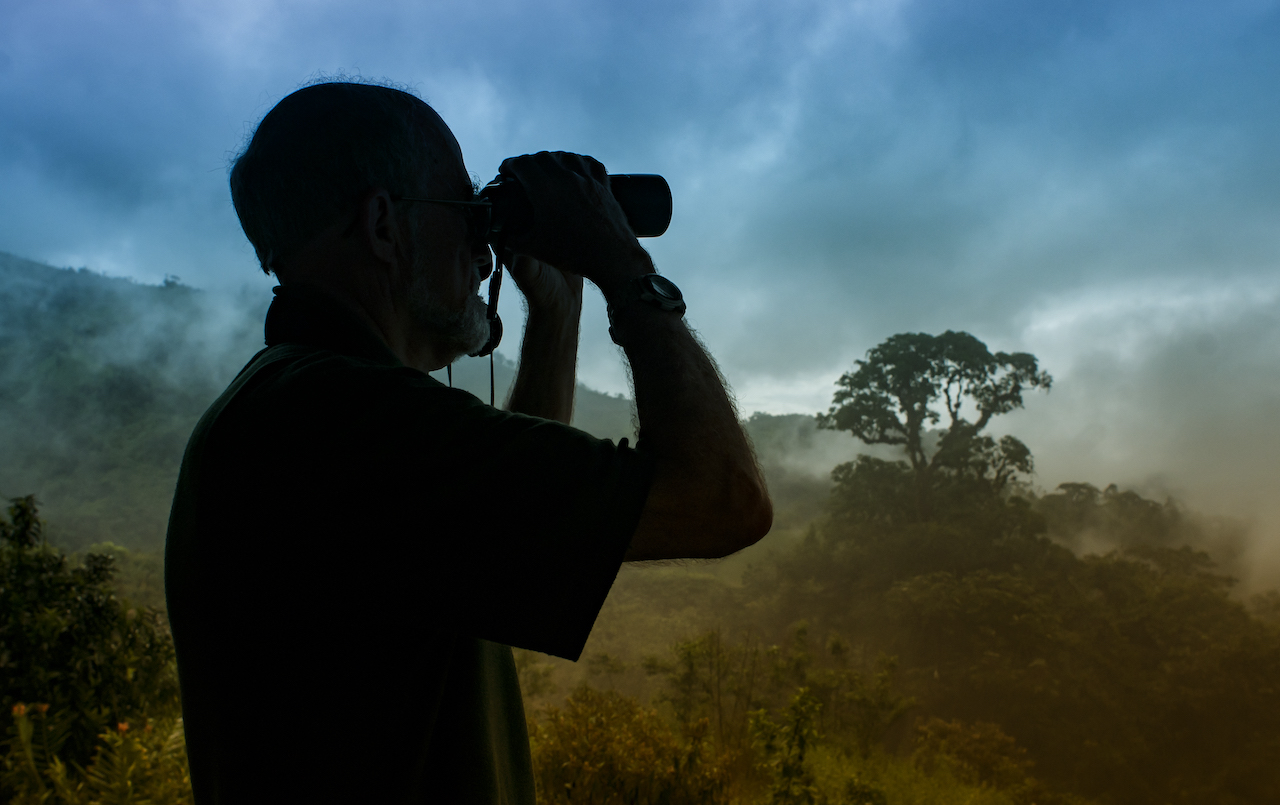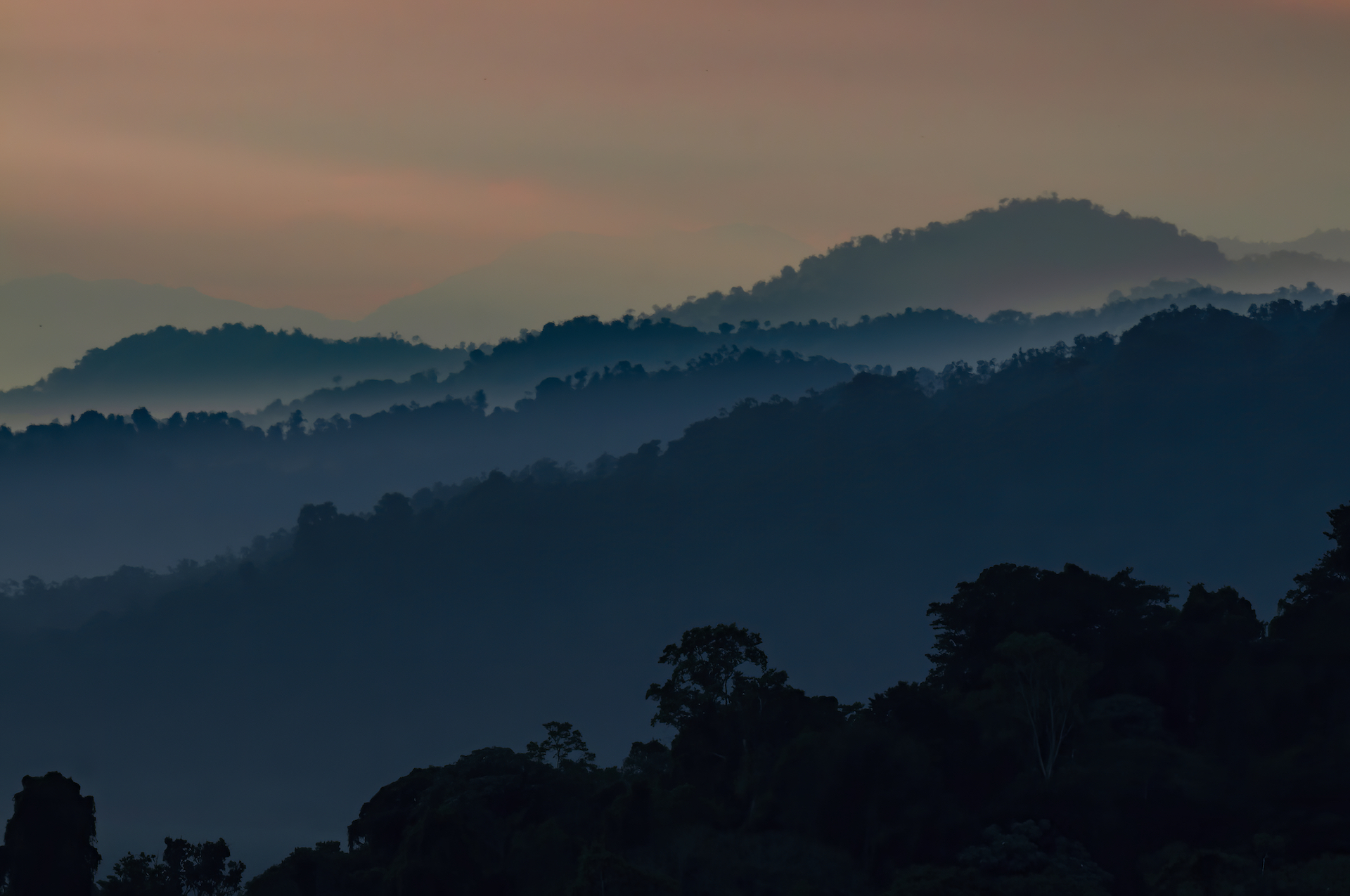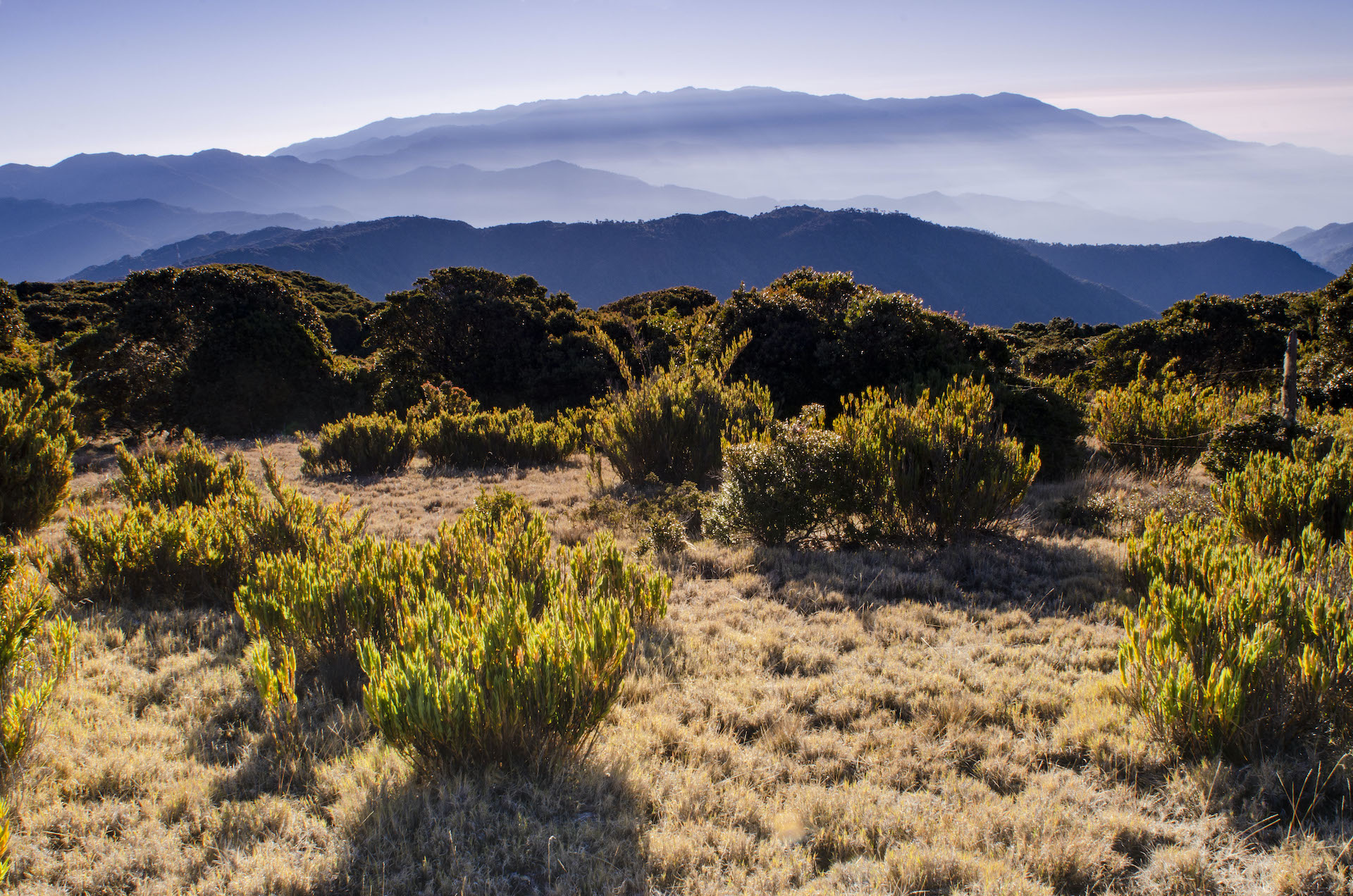Birding locations in Costa Rica

General info.
It may seem incredible that so many species can be packed into such as small country as Costa Rica. Basically, the key of this impressive diversity, however, lies in the topography and effect on climate. Of course, Costa Rica’s location between 8- & 11-degrees north latitude (between the tropics) also plays an important role.
Mainland Costa Rica rests atop the western end of a relatively small tectonic plate known as the Caribbean plate. This plate is pushing against the even smaller Cocos plate to the west, creating a subduction zone off the Costa Rica’s Pacific coast. Along with periodic earthquakes, a consequence of this geological activity is volcanism. Over the past several million years, four volcanic mountain ranges have built up, forming a fairly continuous series of ridges aligned in a northwest-southeast orientation. This position is perpendicular to the flow of prevailing northeast trade winds, making the mountains a barrier to the passage of these moisture-laden air currents. The resulting differences in moisture and temperature between the lowlands and highlands and between the Caribbean and Pacific sides of the country are the basis for the following six major life zones, each with its own unique mixture of bird’s species.
Caribbean Lowlands
This hot and humid region receives rain throughout the year, resulting in luxuriant, evergreen tropical vegetation (where it hasn’t been removed for agriculture). Statistically, there are two somewhat drier periods, which occur in March and April and then in September and October, with
the wettest months being July and December. However, it can rain any day of the year and at any time of day on this side of Costa Rica.
As there are essentially no impeding topographic barriers, this climatic regime extends from northern South America all the way to southern Mexico. Consequently, many of the classic Neotropical bird families (e.g., toucans, puffbirds, antbirds, cotingas, and manakins) also extend that far north.
Given the extent and relative homogeneity of this climatic region, it is not surprising that few limited-range species occur in this part of Costa Rica.
However, it is the place to find the Snowy Cotinga, Plain-colored Tanager, Nicaraguan Seed-Finch, and Nicaraguan Grackle (these last two perhaps more constrained by habitat requirements than climatic factors).

Caribbean Foothills
Moving inland from the Caribbean coast, one eventually encounters the base of the mountains and the very wet foothill belt. As the moist air coming in off the Caribbean Sea reaches this obstacle, it rises and, in doing so, cools. The result is rain-and lots of it. Some sites in this life zone can receive more than 20 feet (6 meters) of rain annually. The richness of the plant life, including many types of epiphytes, is one of the main reasons for a correspondingly high bird diversity. Hummingbird and tanager species (dependent primarily on flowers and fruits, respectively) are particularly well-represented in the foothills.
While mixed species flocks are an element of bird behavior in many life zones, their prevalence in the foothills is particularly notable. It also seems that a relatively high percentage of species in this habitat occur at very low population densities. Of the many species that inhabit this life zone, seventeen are limited-range species.
Middle Elevations
Moving farther upslope, precipitation levels remain high, but temperatures are noticeably lower. As a result, the classic Neotropical bird families are not as well-represented as at lower elevations.
The major exception, how-ever, is the furnariids (excluding woodcreepers), which reach their maximum diversity in the epiphyte-laden forests of middle elevations. This life zone is home to many limited-range species, including the Coppery-headed Emerald, which occurs only in Costa Rica. Like most middle-elevation species, it is equally at home on both the Caribbean and Pacific sides of the mountains.
Highlands

At the cool and wet upper elevations, diversity diminishes but endemism reaches nearly 50%, and many of the more wide-ranging species are represented by endemic subspecies (e.g., Highland Tinamou, Red-tailed Hawk, Band-tailed Pigeon, Green Violetear, Magnificent Hummingbird, Hairy Woodpecker, and American Dipper). This level of endemism is not surprising since the mountains of Costa Rica and western Panama are separated from similar elevations to the north or south by sizeable geographic gaps. Again, in this cooler life zone, the classic Neotropical families are poorly represented and several do not occur at all.
It is worth noting that altitudinal migration is a common phenomenon in the tropics, and numerous species, especially nectivores and frugivores, turn up seasonally in areas well below their normal breeding elevations.
Conversely, as an apparent effect of global warming, it has become common over the last few decades for species to show up at higher-than-expected elevations.
Southern Pacific Lowlands
South of the Tárcoles River, the habitat changes quite abruptly. A short dry season, with occasional showers interspersed, results in evergreen vegetation that is fairly reminiscent of the Caribbean lowlands. The aforementioned river actually has nothing to do with this change: it is the high mountains to the east that block the cradle wind none ofeidi, of the country, thus allowing moist Pacific air to come onshore more regularly during the dry season. The farther south you go along the coast, the shorter and less intense the dry season and the greater the precipitation.
The hot and humid conditions of this life zone means that most of the classic Neotropical families are represented here. Interestingly, it seems that at some point this region connected with the Caribbean lowlands, but has since been isolated by drier areas to the north and south and high mountains to the east. The result is the evolution of at least thirteen species pairs, including White-crested and Black-crested Coquettes, Charming and Blue-chested Hummingbirds, Fiery-billed and Collared Aracaris, Turquoise and Lovely Cotingas, and Orange-collared and White-collared Manakins. A total of twenty-one species in this life zone have limited ranges; notably, the Black-checked Ant-Tanager’s entire range lies within the southern part of Costa Rica.
Of course, each of the preceding six major life zones comprises numerous habitat types, and many bird species are as dependent, if not more so, on habitat as they are on a given life zone. The range of the endemic Mangrove Hummingbird, for example, spans the northern and southern Pacific low-lands, but within that range the bird is confined to mangroves and their immediate vicinity. Similarly, wetland species such as herons and kingfishers are often widespread but occur only in the appropriate habitat.
Ref. Birds of Costa Rica, Second Edition, Richard Garrigues & Robert Dean. Pages #7 to #11.
